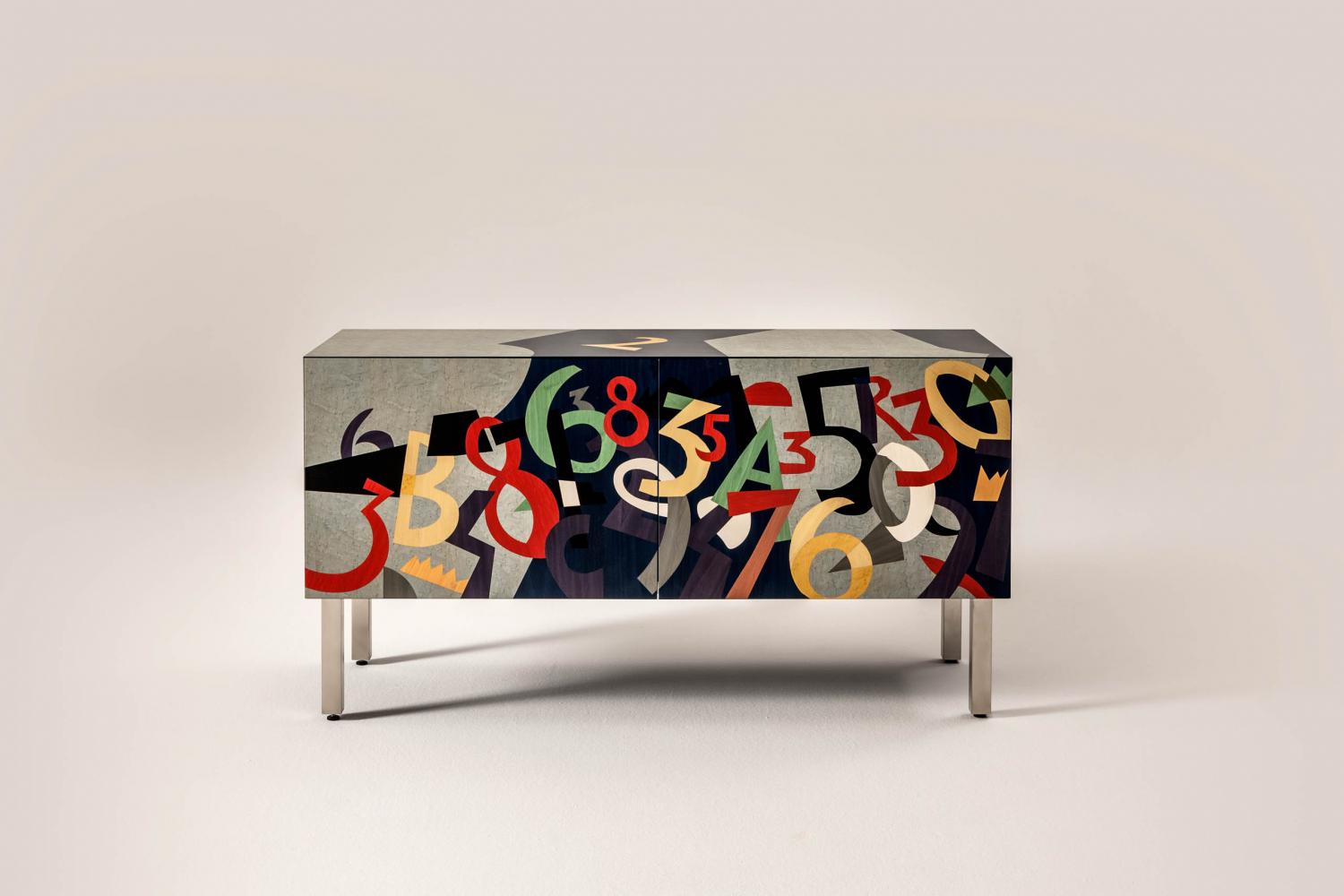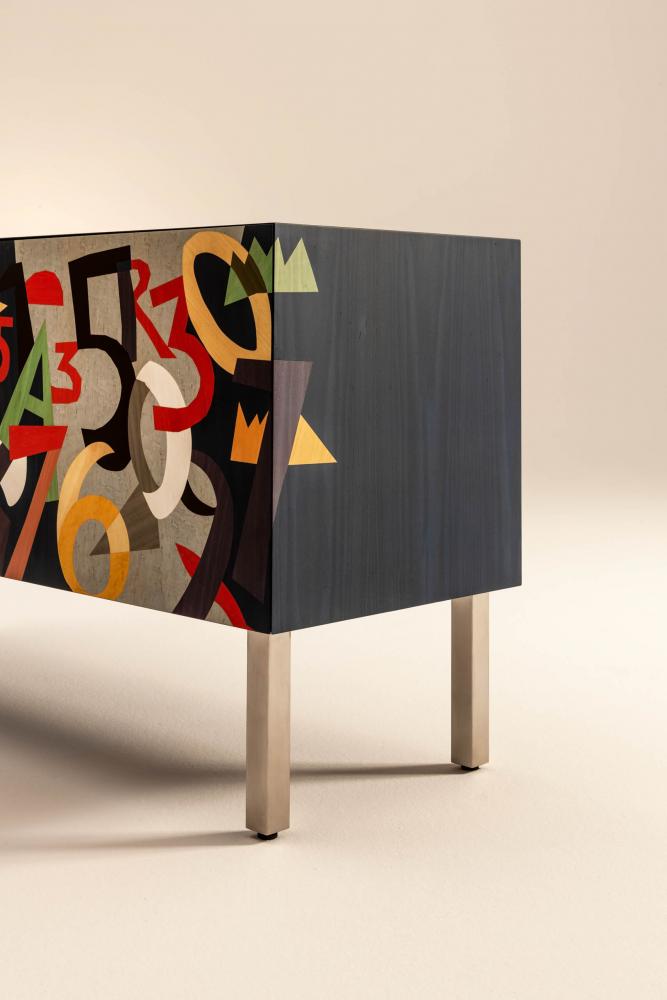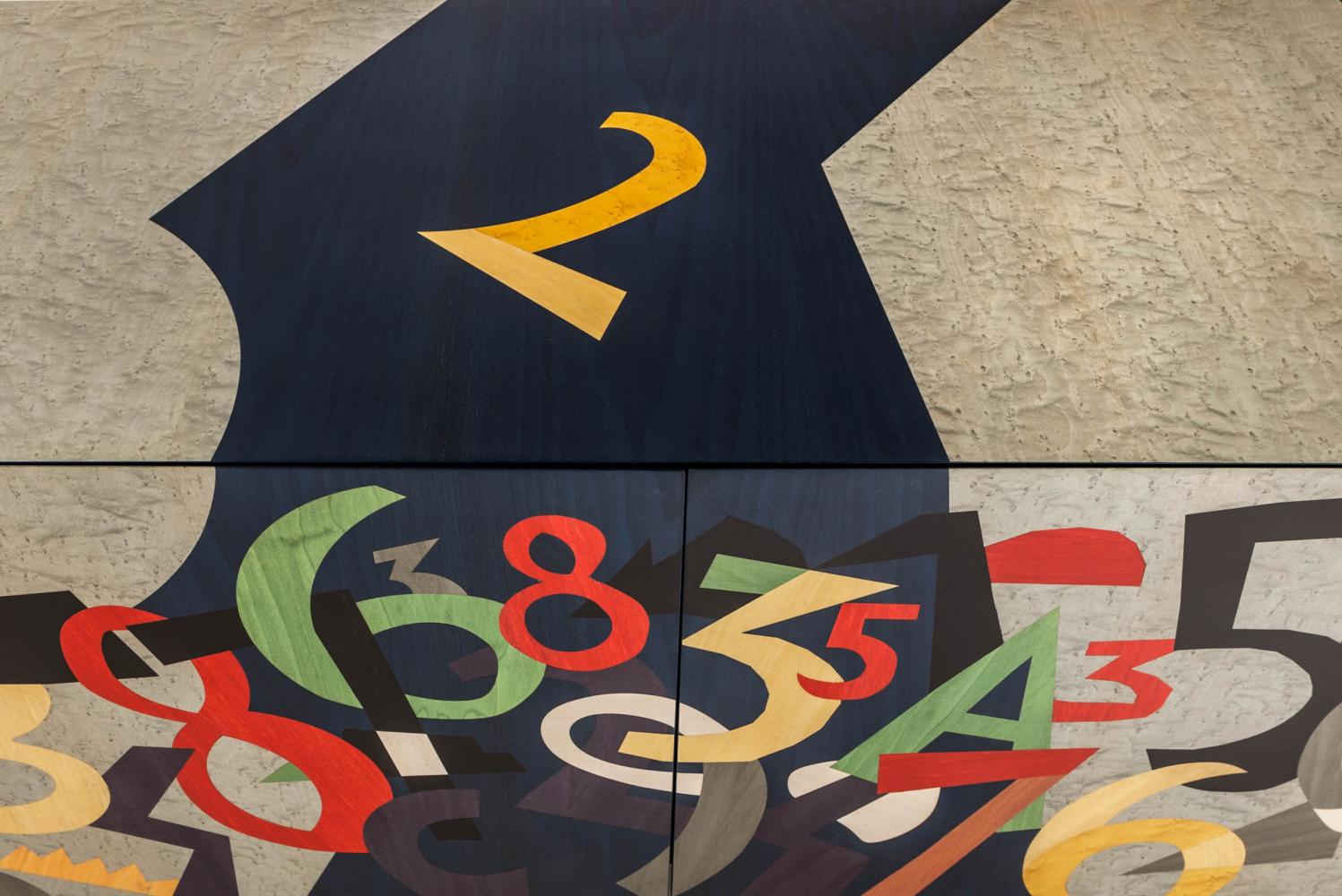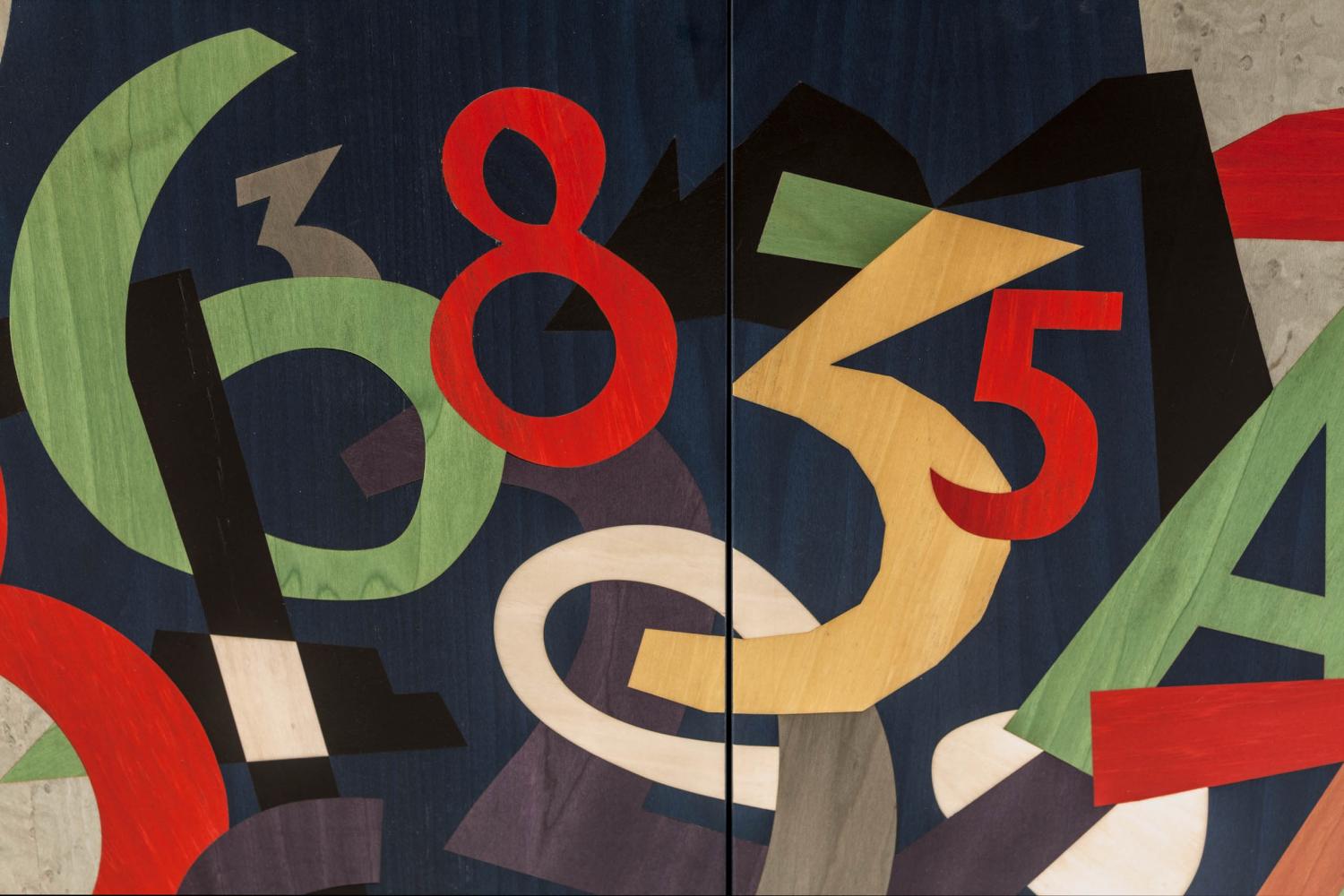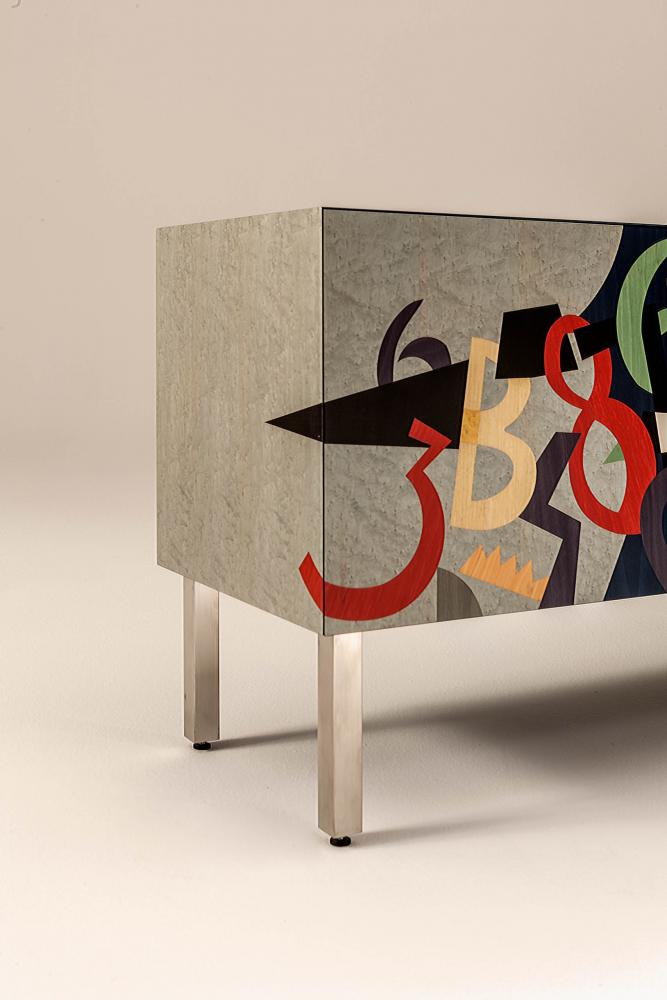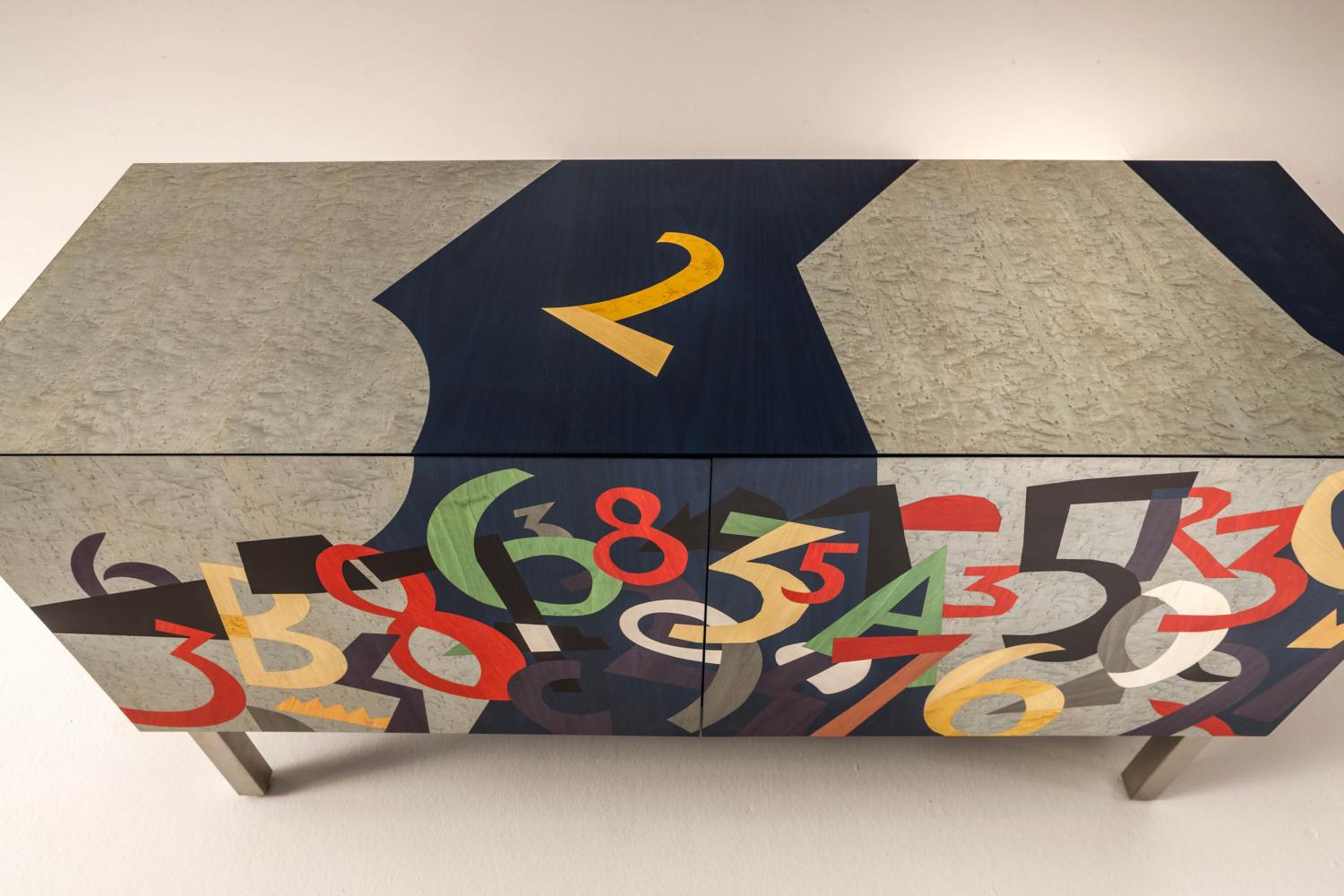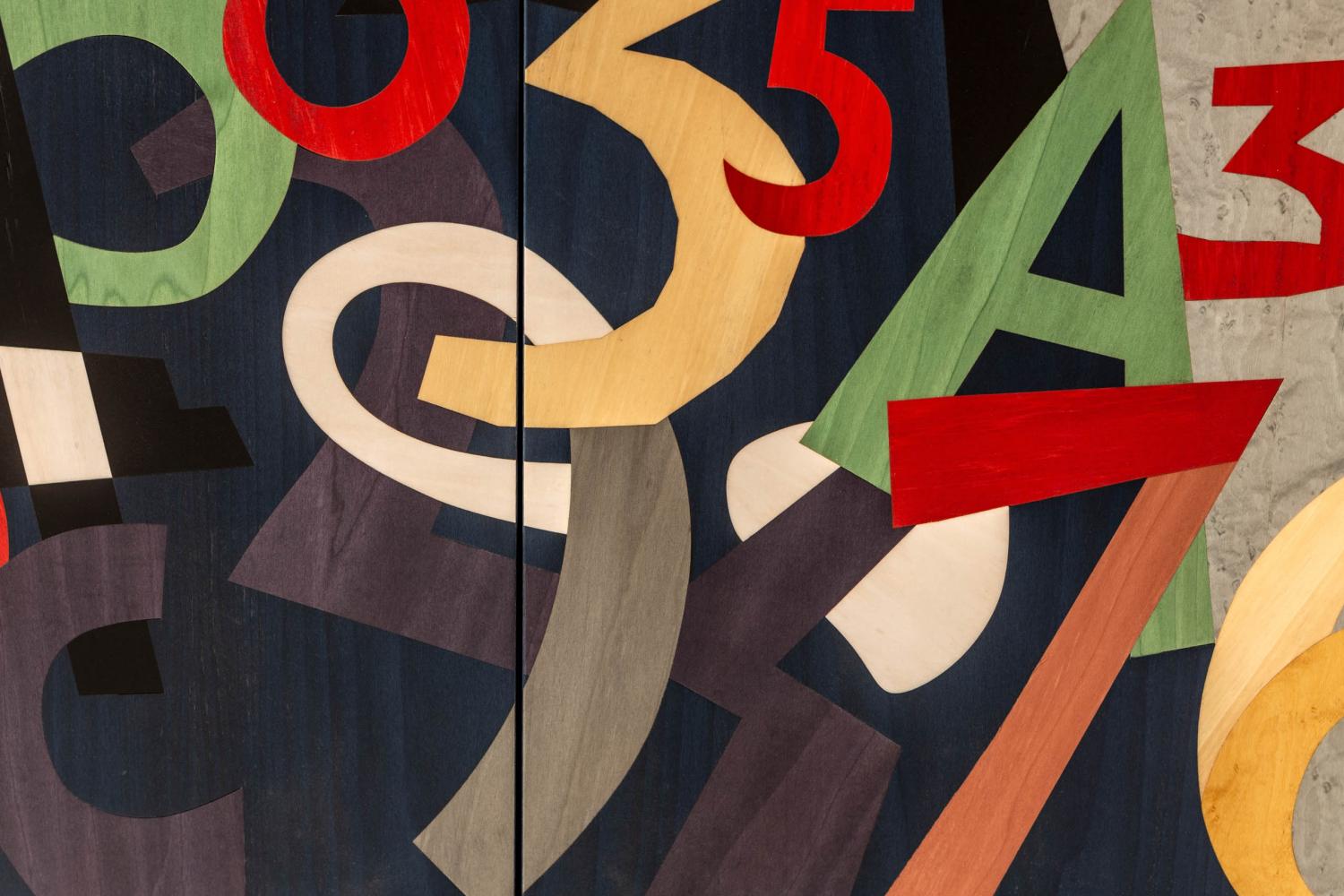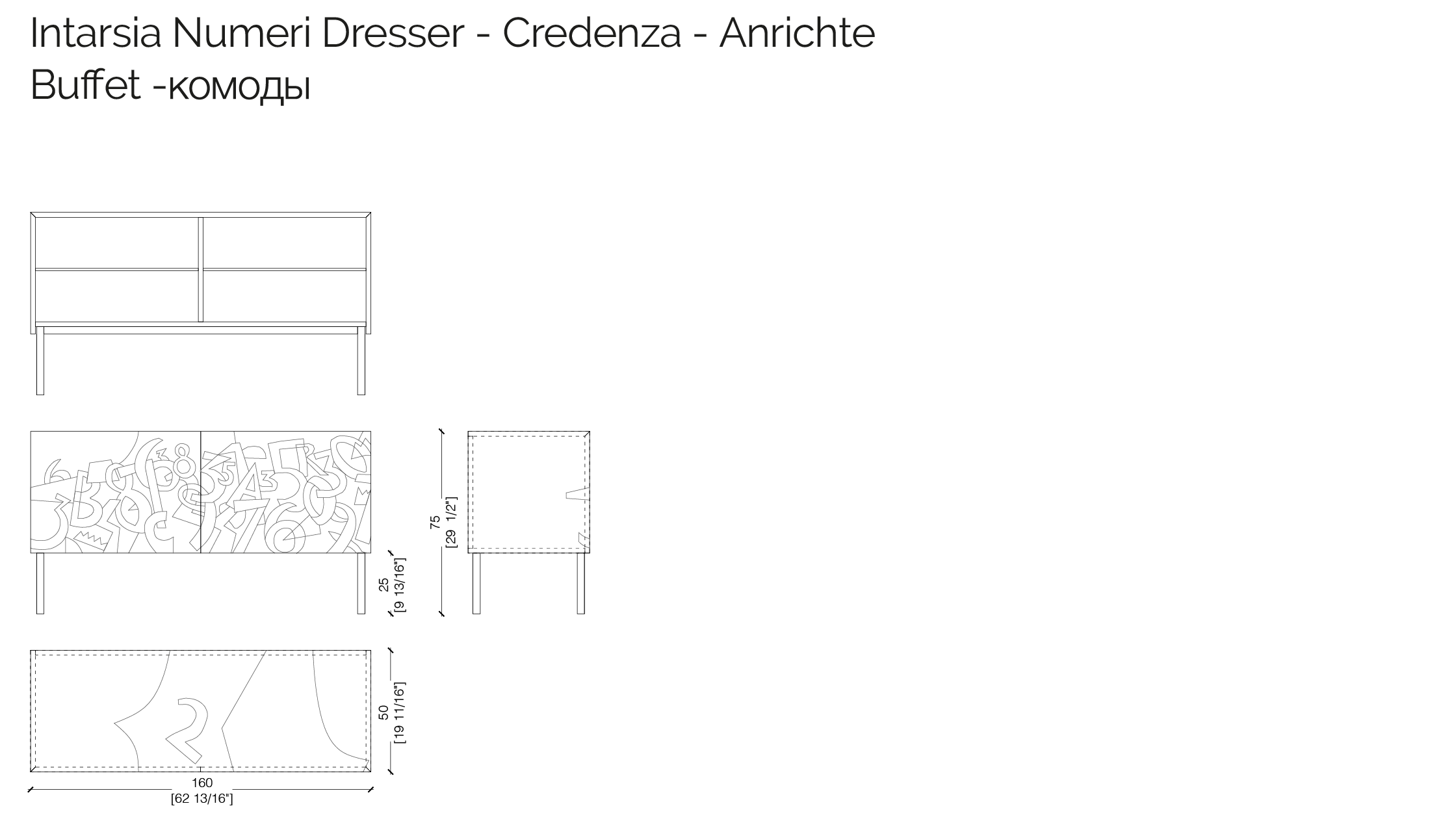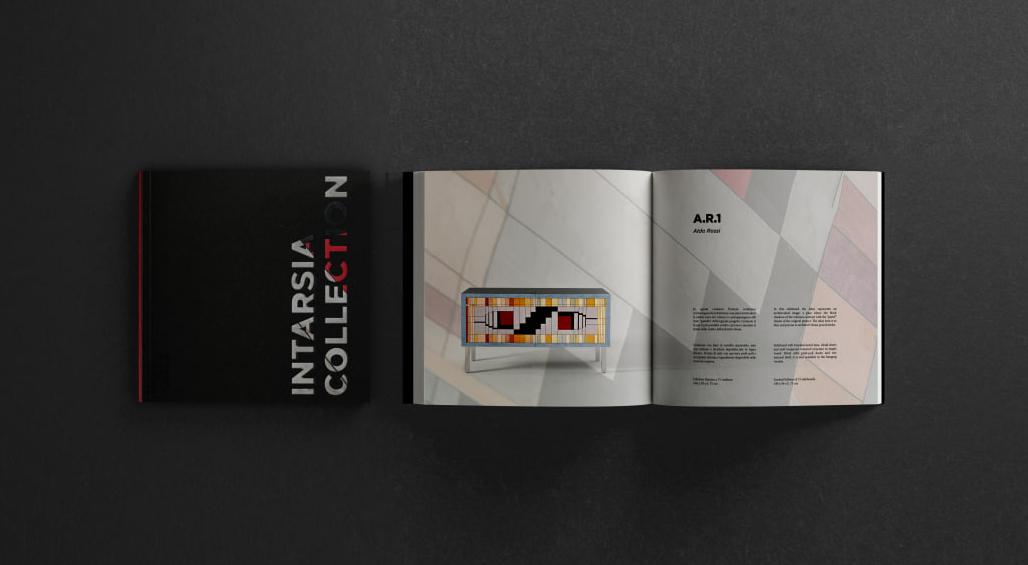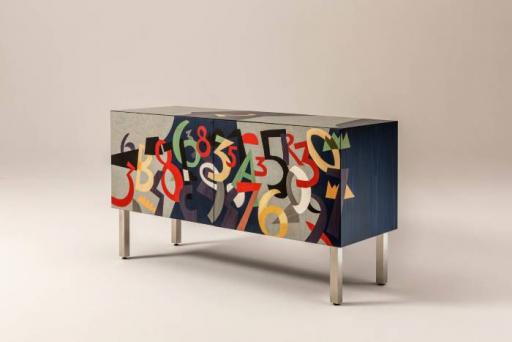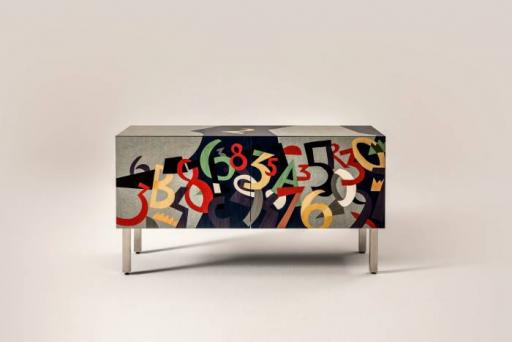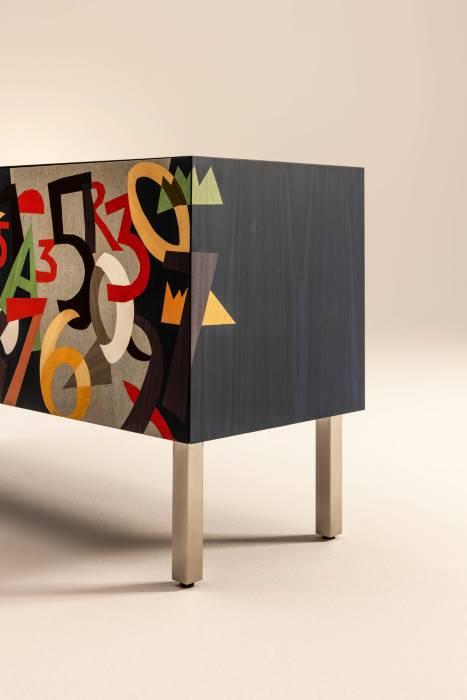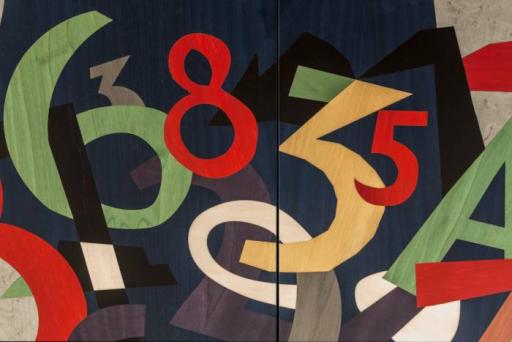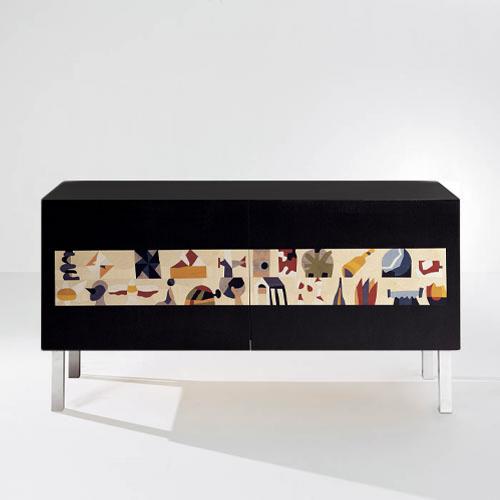TOP



DISCOVER MORE
MORE
In Numeri, Pop artist Ugo Nespolo fills the two-tone background in shades of blue with a free composition of numbers in brilliant colours, which protrude from the surface of the doors and turn up, colouring, on the top and sides edges. Never totally tied to a trend, Nespolo's art is immediately characterized by an accentuated ironic, transgressive imprint and a personal sense of fun.
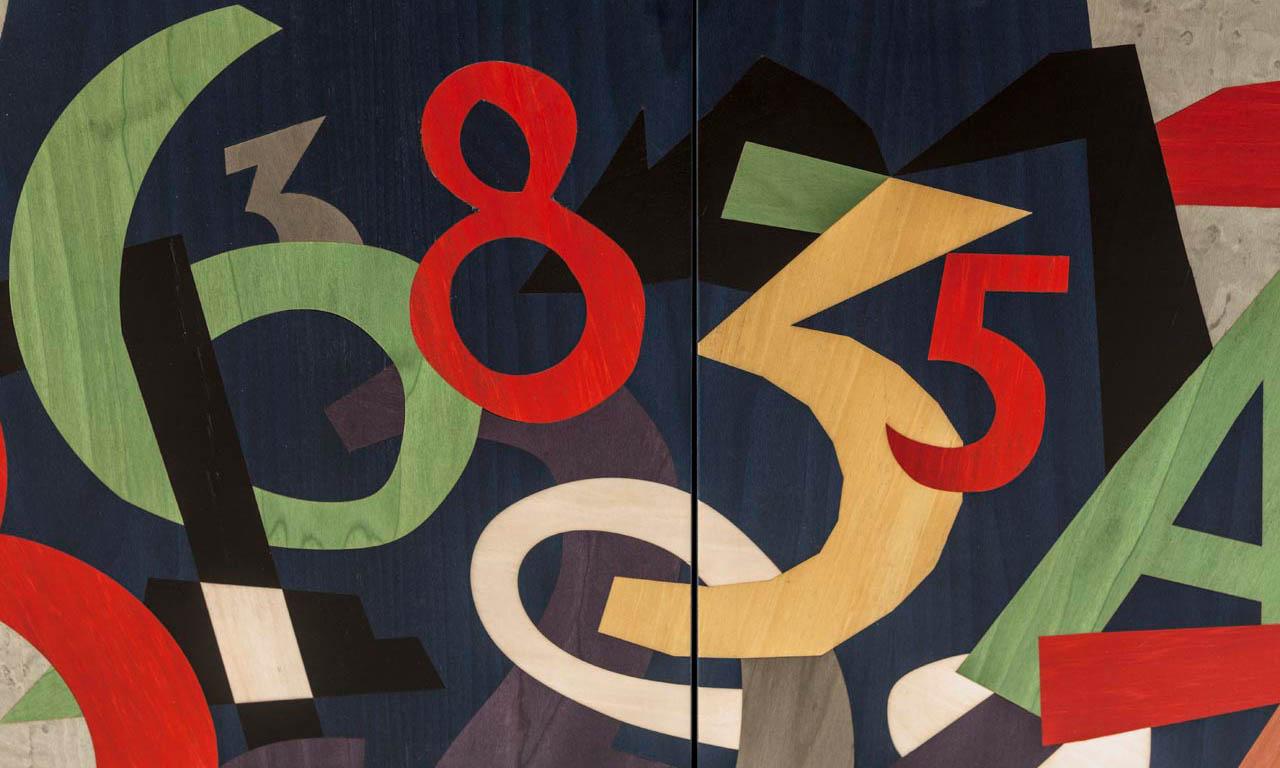

Limited edition sideboards like true art pieces
Famous artists and designers well known on the international scene such as Aldo Rossi, Emilio Tadini, Bruno Gregori, Hsiao Chin, Robert and Trix Haussmann and Fausta Squatriti exclusively created for Laurameroni paintings to be reproduced, using the ancient inlay technique, on a sideboard characterized by essential lines.
Laurameroni Art Collection sideboards feature a mosaic created through various kind of wood veneers, in different essences and colours, patiently combined to reproduce the artist's original painting.
The Intarsia Collection was created to appreciate and relive the local tradition of an ancient technique: that of inlay. They are a product designed to be reproduced in a limited edition and in numbered pieces, signed and certified by the artists and craftsmen themselves.
Intarsia also represents direct contact with simple and pure raw materials, taking shape through the manual skill and scrupulous dedication of our craftsmen, reinvented and modernized by the imagination and experience of our designers.
The sideboards of the Intarsia Collection are design furniture transformed into real paintings.
Limited edition sideboards like true art pieces
Famous artists and designers well known on the international scene such as Aldo Rossi, Emilio Tadini, Bruno Gregori, Hsiao Chin, Robert and Trix Haussmann and Fausta Squatriti exclusively created for Laurameroni paintings to be reproduced, using the ancient inlay technique, on a sideboard characterized by essential lines.
Laurameroni Art Collection sideboards feature a mosaic created through various kind of wood veneers, in different essences and colours, patiently combined to reproduce the artist's original painting.
The Intarsia Collection was created to appreciate and relive the local tradition of an ancient technique: that of inlay. They are a product designed to be reproduced in a limited edition and in numbered pieces, signed and certified by the artists and craftsmen themselves.
Intarsia also represents direct contact with simple and pure raw materials, taking shape through the manual skill and scrupulous dedication of our craftsmen, reinvented and modernized by the imagination and experience of our designers.
The sideboards of the Intarsia Collection are design furniture transformed into real paintings.


Ugo Nespolo: the artist of unconventional materials and means
Ugo Nespolo made his debut on the Italian art scene in the 1960s. Never absolutely linked to a trend, its production is immediately characterized by an accentuated ironic, transgressive imprint, for a personal sense of fun that will always represent a sort of trademark.
Nespolo's production includes paintings, sculptures in ceramic, glass and bronze, experimental films, furnishings, posters, theatrical scenes and costumes and much more, all made with unusual techniques and materials, to create magnificent contamination between real life and art.
The Numeri sideboard is a simple and fundamental expression of Nespolo's vision of art: a total design manifesting in the affirmation of the power of art and poetry, an imaginative and childlike game where everything is possible and where the virus of creativity nestles.
"The artist must not set limits to his creativity", he says. “I love what I do and I like to use different techniques and materials. I'm simply curious and art is the intrinsic element of all the means I use to create my works".


Ugo Nespolo: the artist of unconventional materials and means
Ugo Nespolo made his debut on the Italian art scene in the 1960s. Never absolutely linked to a trend, its production is immediately characterized by an accentuated ironic, transgressive imprint, for a personal sense of fun that will always represent a sort of trademark.
Nespolo's production includes paintings, sculptures in ceramic, glass and bronze, experimental films, furnishings, posters, theatrical scenes and costumes and much more, all made with unusual techniques and materials, to create magnificent contamination between real life and art.
The Numeri sideboard is a simple and fundamental expression of Nespolo's vision of art: a total design manifesting in the affirmation of the power of art and poetry, an imaginative and childlike game where everything is possible and where the virus of creativity nestles.
"The artist must not set limits to his creativity", he says. “I love what I do and I like to use different techniques and materials. I'm simply curious and art is the intrinsic element of all the means I use to create my works".


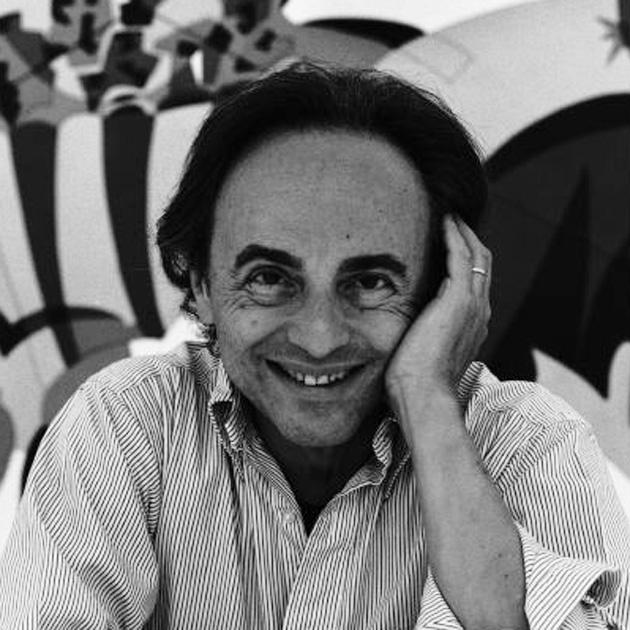
Ugo Nespolo
Ugo Nespolo, born in 1941, graduated from the Accademia Albertina di Belle Arti in Turin. In the 60s he moves to New York, where he is swept away by the atmosphere of a cosmopolitan city and is fascinated by the emerging Pop Art, while in the 70s he frequents and plays in "Poverty Circles". He has a significant passion for cinema, giving life to important retrospectives dedicated to him in important museums (Philadelphia, New York, London, Paris, Cologne, Beijing, Shanghai). He then found the Cinema Degli Artisti with Mario Schifano and between 1967 and 1968 he makes several films in which friends and colleagues, such as Enrico Baj, Michelangelo Pistoletto and Lucio Fontana, play the protagonists. Despite the American influences, he does not forget the influence of the European avant-gardes. He is also interested in design and his research embraces attention to materials: wood, metals, glass, ceramics and precious stones. His art is, therefore, closely connected to daily life and full of conceptual contributions: "you can't make art without thinking about art".
Ugo Nespolo
Ugo Nespolo, born in 1941, graduated from the Accademia Albertina di Belle Arti in Turin. In the 60s he moves to New York, where he is swept away by the atmosphere of a cosmopolitan city and is fascinated by the emerging Pop Art, while in the 70s he frequents and plays in "Poverty Circles". He has a significant passion for cinema, giving life to important retrospectives dedicated to him in important museums (Philadelphia, New York, London, Paris, Cologne, Beijing, Shanghai). He then found the Cinema Degli Artisti with Mario Schifano and between 1967 and 1968 he makes several films in which friends and colleagues, such as Enrico Baj, Michelangelo Pistoletto and Lucio Fontana, play the protagonists. Despite the American influences, he does not forget the influence of the European avant-gardes. He is also interested in design and his research embraces attention to materials: wood, metals, glass, ceramics and precious stones. His art is, therefore, closely connected to daily life and full of conceptual contributions: "you can't make art without thinking about art".



